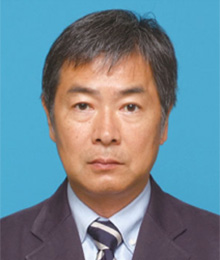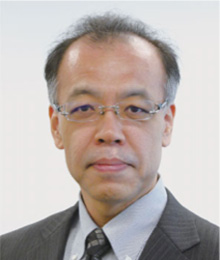
Yoichi SUZUKI

Shoji TANAKA

Masayuki TAKADA



Broadcasting Satellite (BS) digital broadcasting was launched in Japan in December 2000 enabling households throughout the country to enjoy Hi-Vision programs. Conventional BS digital broadcasting made use of the Integrated Services Digital Broadcasting - Satellite (ISDB-S) transmission system having a transmission capacity of 52 Mbps. This system enabled the transmission of two 2K Hi-Vision programs per channel. Following this, the market need grew for 4K and 8K programs to provide even higher levels of definition, but the resolutions of 4K and 8K correspond to 4 times and 16 times compared to 2K, respectively. Therefore, transmission capacities of 25 - 30 Mbps and 80 - 100 Mbps are needed for 4K and 8K, respectively. The need arose for developing a transmission system that could ensure a transmission capacity approximately two times the conventional system, i.e., 100 Mbps to broadcast one program of 8K and three programs of 4K without changing the bandwidth and other conditions in the conventional transmission system.
The recipients developed the new ISDB-S3 transmission system for 4K and 8K satellite broadcasting applying the following three elemental technologies to achieve the required transmission capacities for 4K and 8K satellite broadcasting while satisfying requirements such as occupied bandwidth and service availability in satellite broadcasting. (1)-(3)
(1) Original design of a low-density parity-check (LDPC) code: Independently designed an LDPC code with a code length of 44,880 bits considering the transmission system requirement such as slot length composed of the transmission frame and achieved error correction performance up to a bit error rate (BER) of 10-11 with no error floor.
(2) Optimization of constellation for 16 amplitude-phase-shift-keying (16APSK): Designed a radius ratio for the concentric circles making up the 16APSK constellation so as to obtain the best BER after error correction. Required C/N in combination with the above LDPC code (code rate 7/9) of 10.8 dB, which is very close to the Shannon limit (9.2dB). The difference is 1.6 dB, which reflects a level of performance approaching the theoretical limit of communication channel capacity (Figure 1).
(3) Achieved high-speed symbol rates by giving the roll-off factor steep characteristics. Increased the symbol rate from the conventional rate of 28.86 Mbaud to 33.7561 Mbaud by adopting a small value of 0.03\the utmost limit\for the roll-off factor of the band-limiting, waveform-shaping filter (Figure 2).


In combination, the above elemental technologies (1) - (3) achieved a transmission capacity of 99.9552 Mbps while satisfying an occupied bandwidth of 34.5 MHz, the same as conventional BS digital broadcasting. Table 1 compares the transmission systems and characteristics of conventional technology (ISDB-S) and this technology (ISDB-S3). The new system approximately doubles the transmission capacity of the conventional system for the same bandwidth with a worst-month service availability that is nearly the same.
The recipients played a leading role in promoting this new technology from standardization to implementation from both a domestic and international perspective. The ISDB-S3 system was reflected in Japanese technical standards in 2014 (Ministry of Internal Affairs and Communications (MIC) 2011 Ordinance No. 87 (partially revised in 2014)) and was specified in a domestic private standard (ARIB STD-B44 Ver. 2.0)(4). It was also adopted as an international standard (Recommendation ITU-R BO.2098) in 2016. In addition, technical materials specifying operational guidelines for broadcasters (ARIB TR-B39 Ver. 1.0) were formulated in 2016. (5)
After the completion of the standardization, in Japan, 4K/8K test broadcasting using the ISDB-S3 transmission system began in August 2016 and new 4K/8K full commercial broadcasting began in December 2018.
In the above way, the recipients played a leading role in the development of the transmission system, and standardization and implementation for achieving new 4K and 8K satellite broadcasting. Furthermore, the recipients opened the door to the launch of the full commercial 8K broadcasting business. The achievements of the recipients have been truly remarkable making them especially worthy of this IEICE achievement award.
Table.1 Comparison of transmission systems and characteristics between conventional technology (ISDB-S) and this technology (ISDB-S3)
| Conventional System (ISDB-S) | This System (ISDB-S3) | |
| Limiting value of occupied bandwidth |
34.5 MHz | |
| Forward Error Correction | Convolutional code + Reed-Solomon code |
LDPC code (code length 44880) + BCH code |
| Modulation scheme in actual operation |
8PSK (code rate 2/3) | 16APSK (code rate 7/9) |
| Roll-off factor | 0.35 | 0.03 |
| Symbol rate | 28.86 Mbaud | 33.7561 Mbaud |
| Transmission capacity | 52.17 Mbps | 99.9552 Mbps |
| Worst-month service availability |
99.86% | 99.70% |